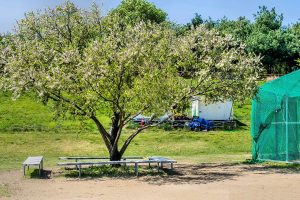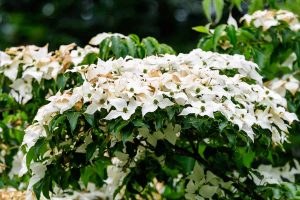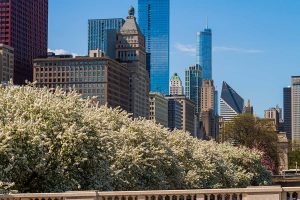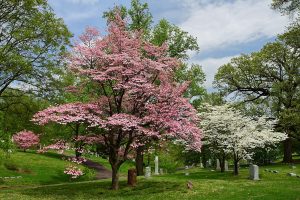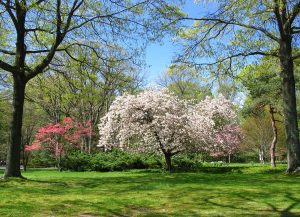Dogwood trees are a type of deciduous flowering tree which produce berries that are notoriously popular as a food source for birds. If your dogwood berries don’t get quickly consumed by birds, they can add another layer of interest to the tree, with many types of dogwood being able to retain clusters of berries from summer right through to fall.
Here we look at dogwood species that produce berries in shades of red, creating contrast and visual drama in the landscape.
Table of Contents
Are Dogwood Berries Edible?
Most dogwood berries are popular as food amongst birds and other wild animals, and some are also edible for humans. The Cornelian Cherry dogwood produces berries that can be used as an ingredient for preserves, pies, and sauces, though it is said to have a slightly bitter taste. Kousa dogwood berries are sweeter and can be enjoyed by humans fresh from the plant.
By contrast, the Flowering dogwood produces berries that are devoured by birds, but they are known to be mildly poisonous to humans. Avoid foraging or consuming any dogwood berries unless you are certain they are suitable for human consumption.
Dogwood Trees with Red Fruits
Kousa Dogwood
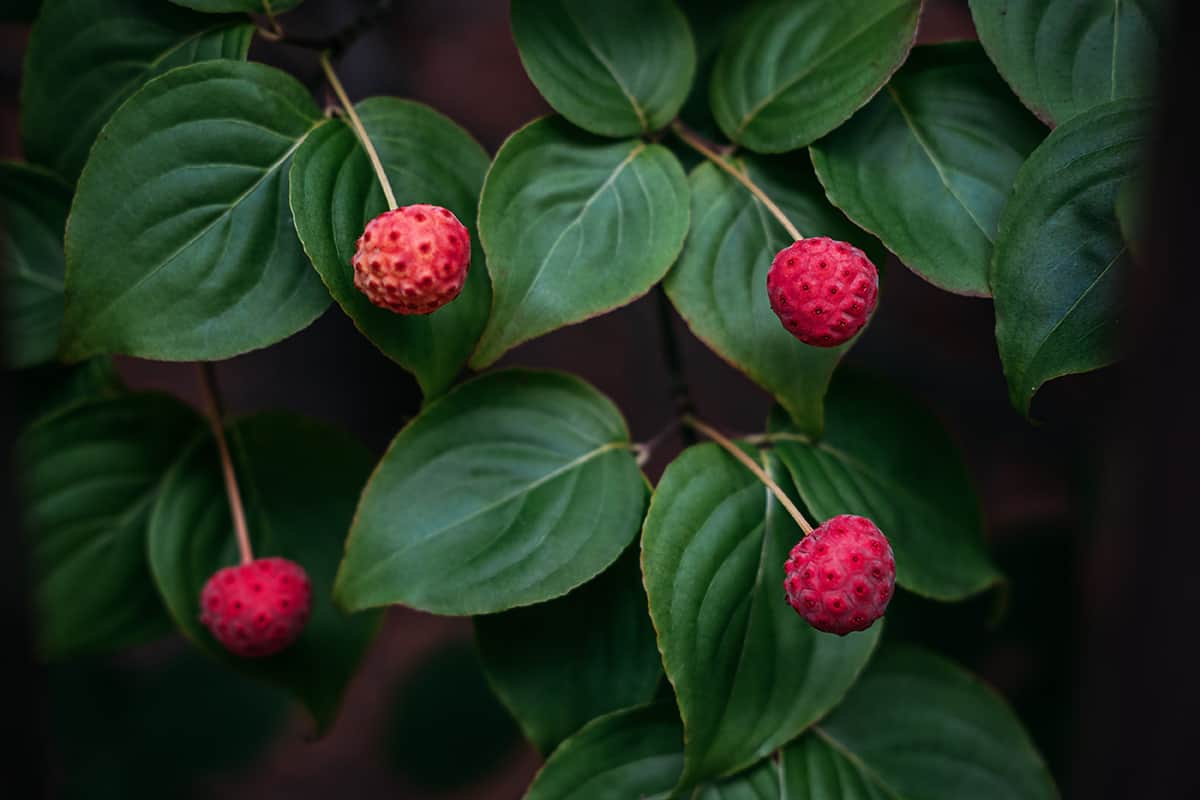
- Botanical name: Cornus kousa
- Common names: Kousa Dogwood, Japanese Dogwood
- Plant family: Cornaceae
- USDA hardiness zone: 5 – 8
- Mature height: 7 to 30 feet
- Mature spread: 3 to 30 feet
The Kousa dogwood is native to Asia, and it is recommended as a good alternative to the Flowering dogwood (Cornus florida). This is because it is visually similar to the Flowering dogwood and requires similar growing conditions.
However, it is considerably more resistant to disease. It is also slightly hardier than the Flowering dogwood. In spring, star-shaped white flowers emerge at the tips of stems and branches, and these give way to round berries in the summer.
These berries vary in color from red to pink and orange, and they dangle solo rather than in groups or clusters like many other types of dogwood berries. The berries can remain on the tree for several months if they don’t get demolished by hungry birds.
By fall, any remaining red berries will become camouflaged due to the foliage, which warms up to a bright shade of scarlet red. By winter, the foliage will have dropped from the tree, revealing the trunk and branches with mottled gray bark, which exfoliates to reveal areas of tan.
Cornelian Cherry
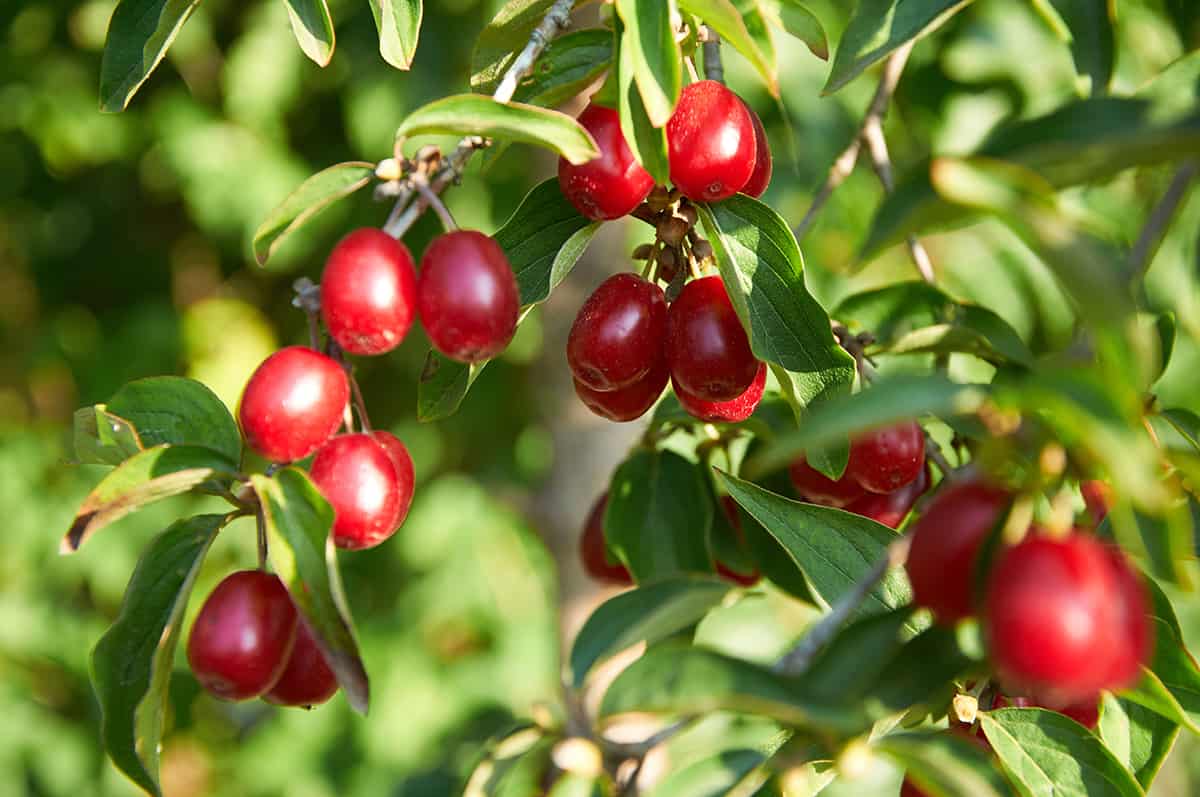
- Botanical name: Cornus mas
- Common names: Cornelian Cherry, Cornel Tree
- Plant family: Cornaceae
- USDA hardiness zone: 5 – 8
- Mature height: 15 to 25 feet
- Mature spread: 12 to 20 feet
This is a spectacular small tree or medium shrub which blooms very early in the year. Dense clusters of tiny yellow flowers appear at the end of bare branches towards the end of winter or early in spring, bringing a much-needed shock of color to the landscape. The flowers will remain intact for several weeks, followed by glossy green foliage. By summer, the showy blooms give way to berries that resemble cherries, hence the common name for the tree of ‘Cornelian Cherry’.
These berries have a slightly oval shape and are bright red in color. They are edible for humans and are most commonly used in recipes for jams and syrups. This tree retains interest throughout every season, with the leaves taking on a deep purple shade by fall. In winter, the leaves will have been shed to reveal the exfoliating, rough bark in a rich chocolate shade.
To grow this plant as a tree, remove suckers as they appear. If suckers are not removed, the plant will spread to form a thicket, which works well for privacy screening. It grows well in full sun or partial shade, and though it prefers moist and rich soils, it will adapt to other soil types.
Gray Dogwood
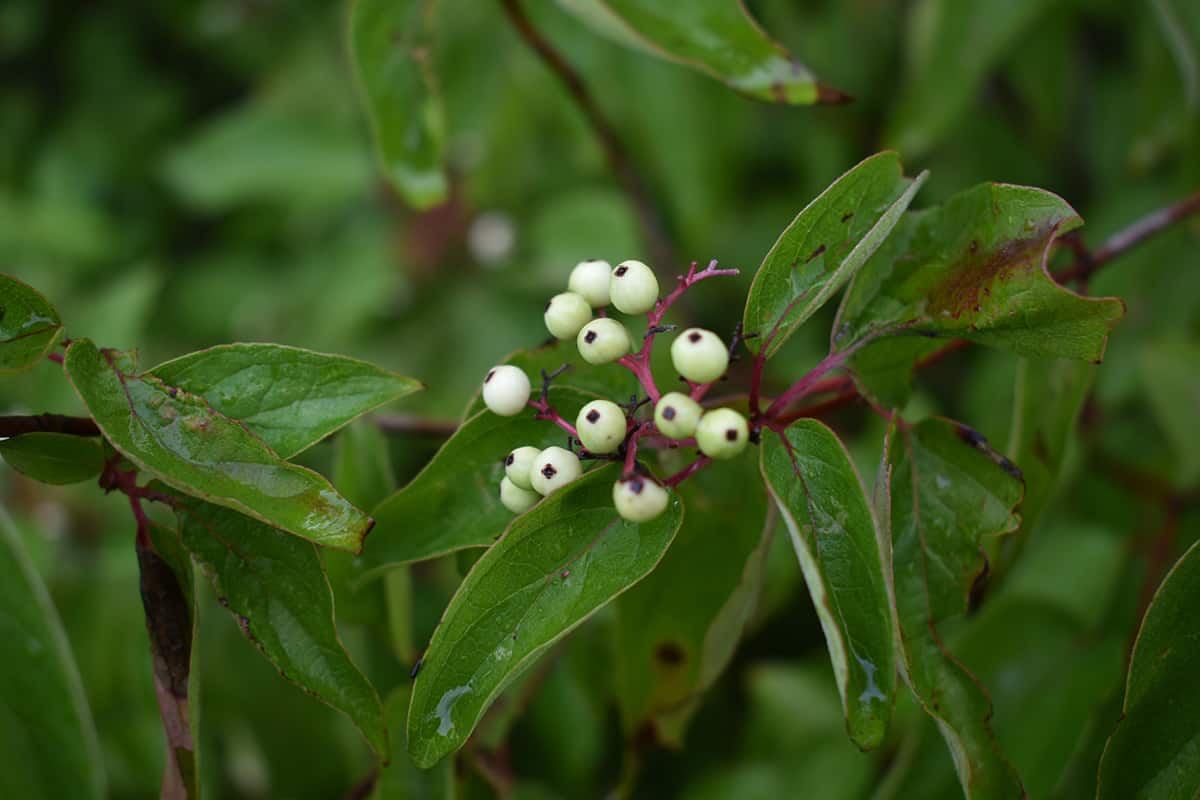
- Botanical name: Cornus racemosa
- Common names: Northern Swamp Dogwood, Panicle Dogwood, Gray Dogwood
- Plant family: Cornaceae
- USDA hardiness zone: 4 – 8
- Mature height: 10 to 15 feet
- Mature spread: 10 to 15 feet
This dogwood grows natively in southern Canada and the northwestern US. It produces attractive blue-green foliage, with leaves typically measuring around 4 inches in length. The flowers bloom towards the end of spring or early summer, putting on a dramatic display of pretty white blossoms bunched together in dense clusters at the tips of stems.
The star-shaped flowers stand out beautifully against the foliage and later develop into berries which are an important source of food for birds and other types of wildlife. If the berries get demolished, the berry stalks will remain on the tree, adding a shock of color. The berry stems are a vivid shade of red, which adds a nice contrast against the green leaves.
By fall, the leaves turn a deep shade of red-purple before dropping to the ground. This is a very useful type of dogwood that can make a good privacy screen or be used for erosion control. It is very adaptable in terms of the growing conditions it will tolerate and can grow in full sun right through to almost total shade. It prefers moist, well-draining soils, but it will also perform well in soils that are dry or wet, and boggy.
Evergreen Dogwood
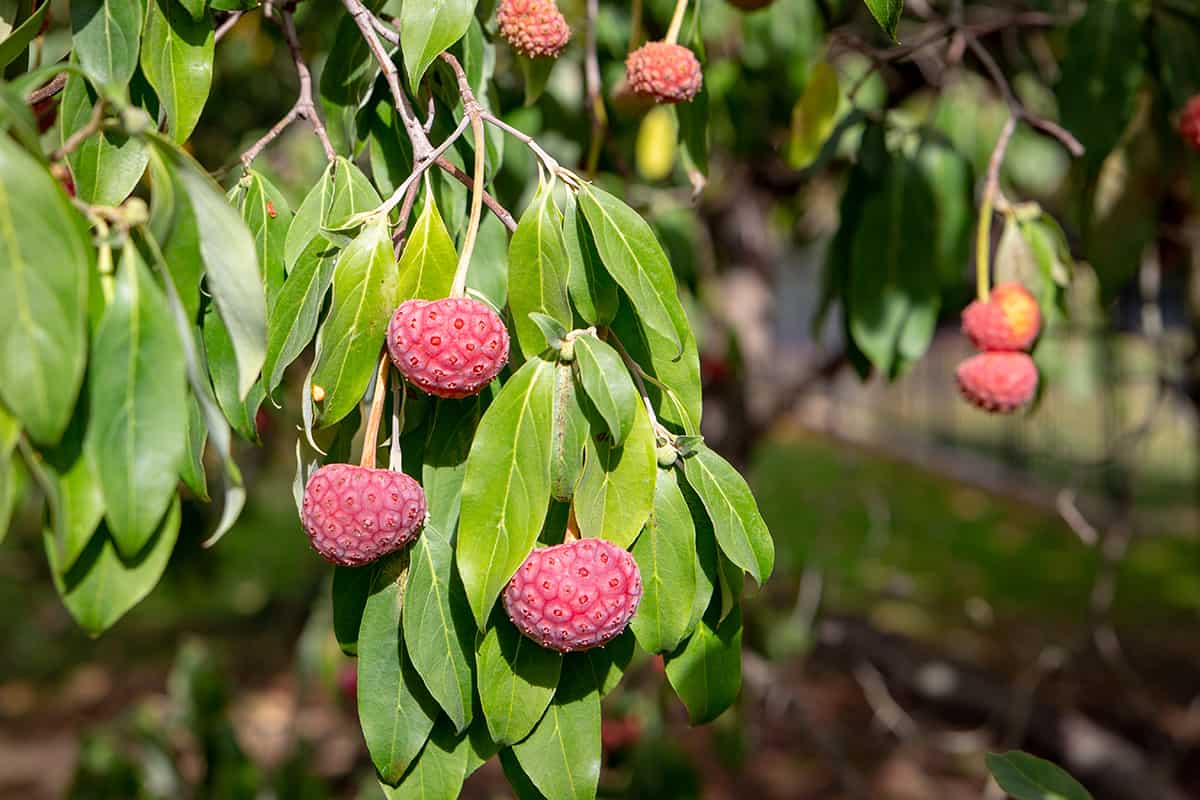
- Botanical name: Cornus capitata
- Common names: Evergreen Dogwood, Himalayan Dogwood, Himalayan Strawberry Tree,
- Plant family: Cornaceae
- USDA hardiness zone: 8 – 9
- Mature height: 20 to 40 feet
- Mature spread: 20 to 40 feet
This Chinese native tree is evergreen, as you may have guessed from the name, which makes it quite unusual for a dogwood. It has a dense, bushy habit and can also be grown as a large shrub. The ovate leaves are dark green and have a leather-like texture with a glossy surface. In early summer, creamy white flowers arrive, which give way to fleshy red fruits which resemble strawberries.
The tree is sometimes called the Himalayan Strawberry Tree due to the fact that the berries look so much like strawberries but with a more round shape. The berries are edible and are very popular amongst birds. This tree is a beautiful specimen plant that grows best in moist, well-draining soils. It can grow in full sun to partial shade, however, is intolerant of high levels of heat and therefore tends to do best in shady or protected spots.
Flowering Dogwood
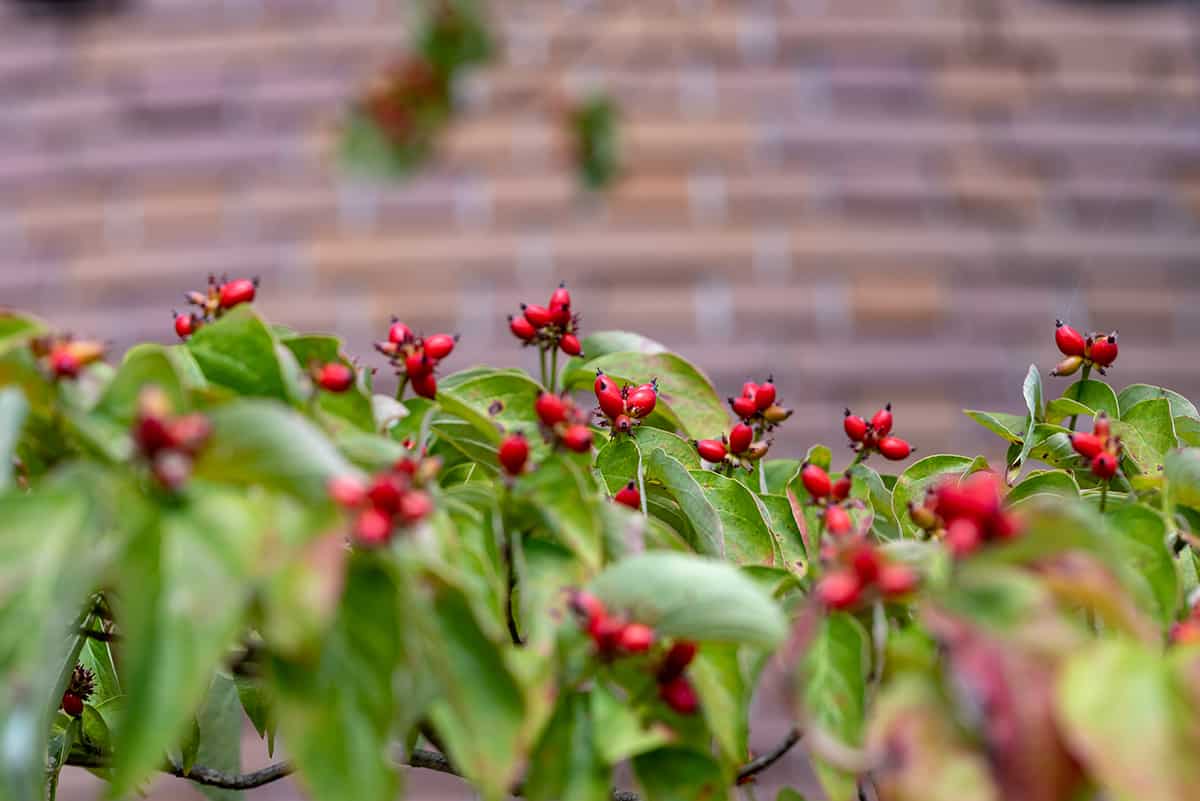
- Botanical name: Cornus florida
- Common names: Flowering Dogwood, Common White Dogwood
- Plant family: Cornaceae
- USDA hardiness zone: 5 – 9
- Mature height: 20 to 25 feet
- Mature spread: 12 to 18 feet
This is a deciduous dogwood that grows as a large shrub or small tree. It is native to North America, growing from southern Ontario in Canada, down through the eastern United States, into northern Mexico. This plant provides four seasons of interest, with white flowers blooming in spring before the foliage emerges. The flowers are quite showy, typically spanning up to 4 inches across.
In summer, the bright green foliage creates a canopy that can be used for shade, and red-orange berries arrive, which adds a vibrant contrast of color. The clusters of shiny berries can remain on the tree for several months, unless they are ravished by birds. In fall, the foliage will develop to intense shades of red and purple before falling to the ground.
Established Flowering dogwoods will have mottled bark that is reminiscent of alligator hide, bringing interest to the landscape through winter. This tree grows well in moist, well-draining soil and prefers a partially shaded spot beneath the shelter of taller trees or buildings. It will tolerate full sun, though it can become very densely branched.
Pacific Dogwood

- Botanical name: Cornus nuttallii
- Common names: Mountain Dogwood, Pacific Dogwood, Pacific Flowering Dogwood
- Plant family: Cornaceae
- USDA hardiness zone: 7 – 9
- Mature height: 15 to 40 feet
- Mature spread: 10 to 25 feet
The Pacific dogwood is a western version of the Flowering dogwood. While the Flowering dogwood grows throughout the eastern side of North America, the Pacific dogwood is found natively from British Columbia in western Canada down to California in the US. It can range in size from a small tree to a medium-sized tree, with tiers of horizontal branches that become smaller as they get closer to the top of the tree, creating an overall cone shape.
Unlike many other types of dogwood, the flowers of this species emerge all along the lengths of the branches rather than just at the tips. They bloom in spring with large, creamy-white flowers which are sometimes flushed with pale pink. The flowers give way to bright red fruits, which will remain on the tree until fall unless they are eaten by hungry birds.
The foliage of this dogwood is green through summer and warms up to shades of orange, yellow, and red in fall. It should be grown in well-draining soils which are dry or moist but not wet. The tree can tolerate full sun but prefers a partially shaded spot.


